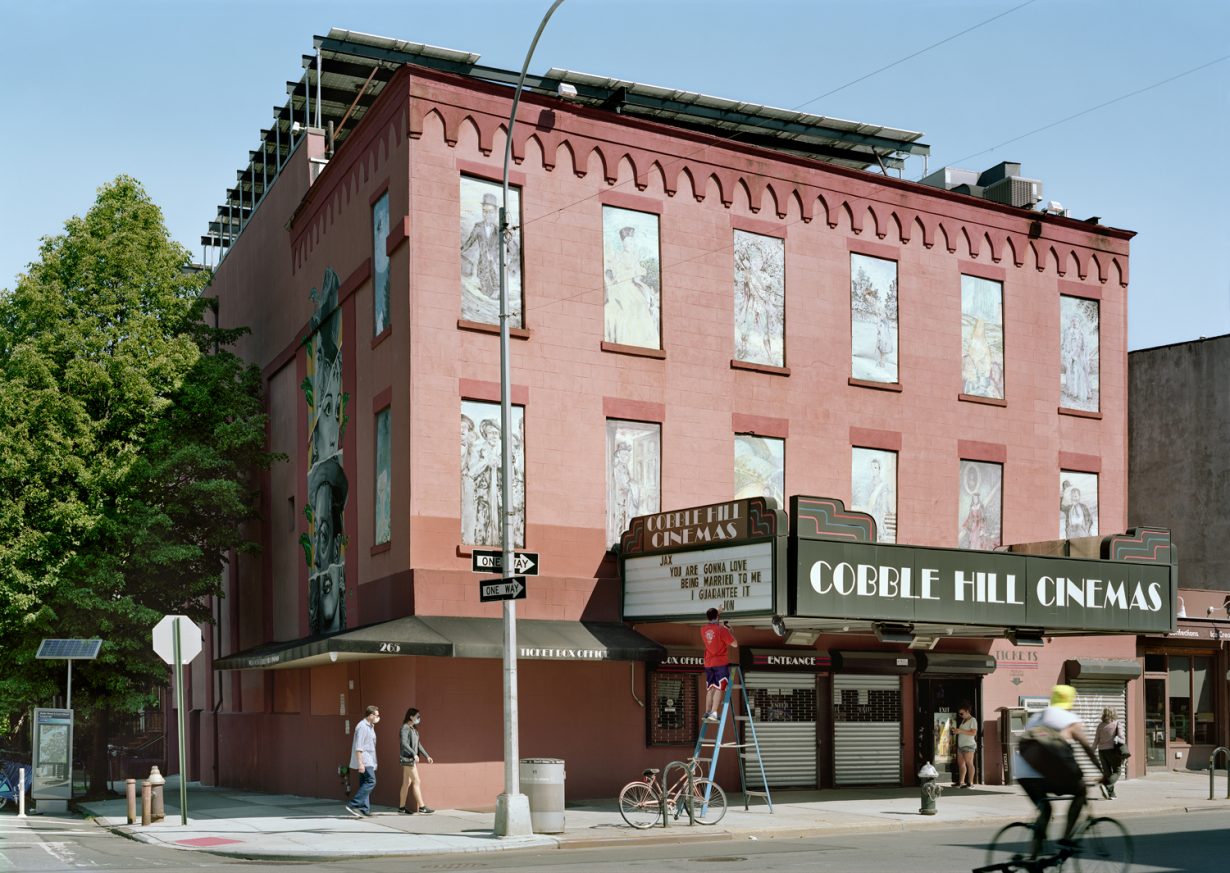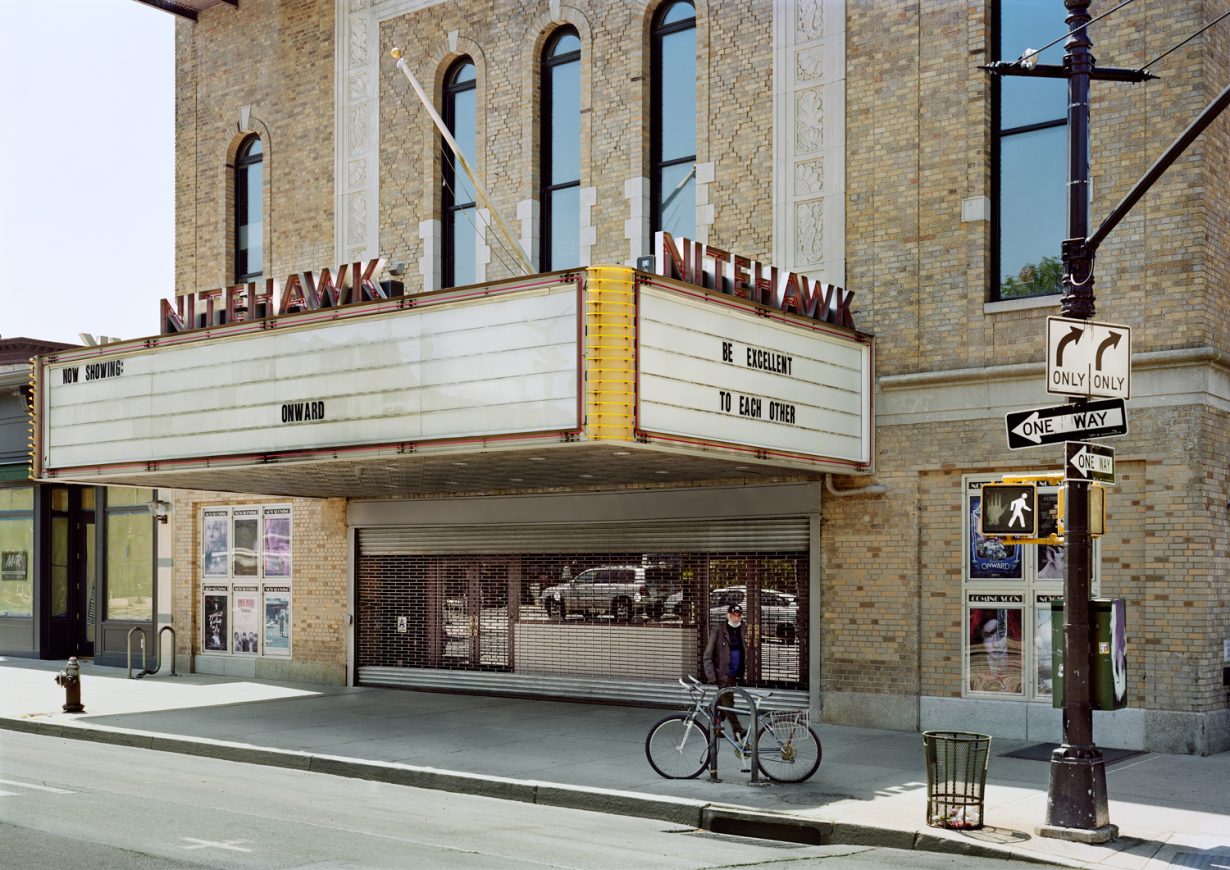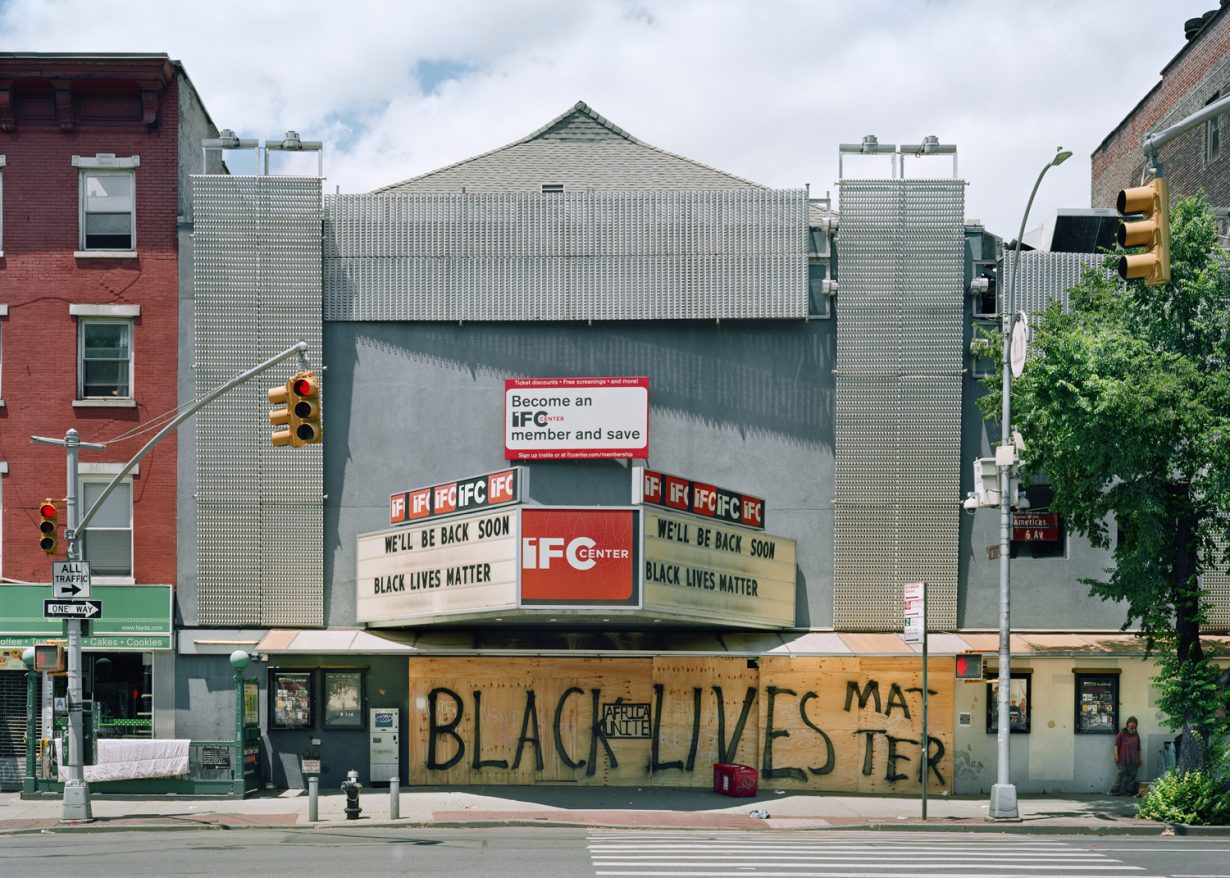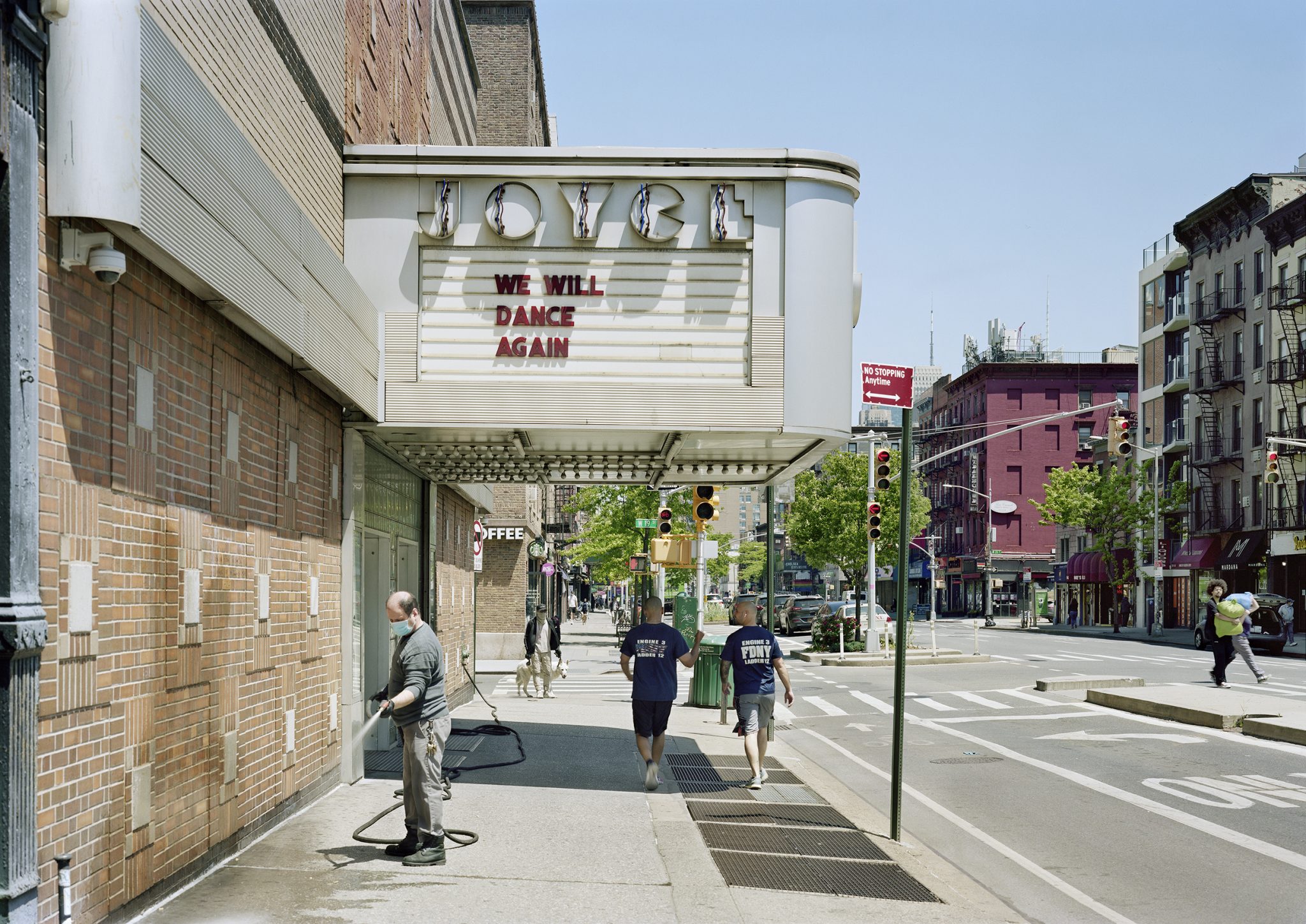‘I realised that the city was speaking to me and I needed to pay attention to what it was trying to tell me’
These photographs were made in May when it was only beginning to feel safe to go out in the street during the pandemic here in New York City. This was fairly early on and there was hardly anyone around. I had started venturing out to my studio after about two or three weeks sheltering at home. My studio is a 20-minute walk from my house, in an office building that was completely deserted at that time. My space is perched in one of the rooftop towers, up 12 flights of stairs, so I felt fairly safe being there. Still, there was an incredible feeling of trepidation leaving the safety of my home to go on what seemed like a risky adventure.
Out there, at the time, I felt completely gripped by the lack of life in the street. I would be walking carefully and with intention. I would notice anyone moving perhaps too close to me. And I would pay attention to the smallest thing – like a piece of paper flying in the wind. There was no traffic, and the silence was eerie. The moments of introspection were intense during these walks. I was in my head so much, processing my fears and insecurities about the future, hatching plans, yet I also realised that the city was speaking to me and I needed to pay attention to what it was trying to tell me.

Three quarters of the way home from the studio I always pass Cobble Hill Cinemas, my neighbourhood movie theatre. One day I noticed that the marquee carried messages: ‘We love you Brooklyn’, ‘Be well and safe’ (the message in the photograph here is, of course, more specific to ‘Jax’). Those lines made me feel seen and heard – the city was speaking to me and I needed to pay attention. I would see these messages regularly, and over time I realised that other small theatres also carried their own idiosyncratic messages. (Not the large chain cinemas, but the arthouses.) It wasn’t long before I photographed the Cobble Hill marquee. And then eventually I got on my bike and rode into Manhattan to photograph the other theatres. The experience of riding my bike over the Manhattan or Brooklyn Bridges, the vastness and endlessness of the empty city, the nakedness of architecture in the deserted streets, all reconnected me to the city. It was a connection that I hadn’t experienced since I first got to New York in the mid-80s.
Movie productions and war reenactments have been important in my work for a while. Allowing me to consider complicated layers of history, they are the perfect foil for exploring what is real and what is fictional in photography, a paradigm that is inherent to the medium but that is never a concern for filmmakers. Usually a marquee will advertise the next feature – a promise of some spectacle, or a journey. Movie theatres are like a secular place of worship. Now we have found ourselves without access to this promise. What the theatres gave us instead were these idiosyncratic messages which I thought were very moving – they spoke to me in powerful ways, during a time when I felt so uncertain.
In the last few years, for my project Silent General, I have found myself engaging with the idea of the American roadtrip, which was very unexpected. I never thought I had anything to contribute to that genre. Now, these movie theatre photos have something to do with the tradition of street photography. It’s a genre that I studied, and I think it’s wonderful, but I am also aware of its criticism – the idea that it lacks authorship, that there is no thinking behind it. So it is a challenge to find myself engaging with a process that tries to capture ‘everyday’ life in a moment that is so extraordinary. The Joyce Theater is a dance performance space. I was drawn to the scripted choreography of two firemen who were walking under the canopy of the building (9/11 is a distant past) while a man hoses the pavement. On the right of the frame, two men struggle with what I assume are laundry bags, and ahead a masked man turns the block corner with his beautiful dog. An everyday moment, set off in unexpected ways, I think, by the message that hangs over them all, ‘We will dance again’, on the marquee.

One of the movies I watched with renewed interest during the second week of the pandemic was Contagion (2011), and it was as if what was in the theatre had been brought to life – and that made the dichotomy even more interesting to me. The thought that this blockbuster had stepped out of the screen and onto the streets, and is now enveloping all of New York City, was surreal. Working with the messaging on those marquees reminded me of Ken Lum’s brilliant Shopkeeper (2001) and Strip mall (2009) series, which both subvert their anticipated transactional messages. I particularly love Midway Shopping Plaza (created for the 2014 Whitney Biennial). He was inspired by the Vietnamese businesses tucked in a shopping mall near his house in Philadelphia. He recreated the signage advertising these businesses but subverted the messaging by inserting important historical moments, places and people related to the Vietnam War, such as Thích Quang Ðúc’s, the name of the monk who self-immolated in 1963.
With the sheltering-in-place order on the horizon, I developed intense preparedness PTSD. I was brought straight back to my childhood during the Vietnam war. I had a conversation with the author Viet Thanh Nguyen, who lives in California. He lives with the perpetual threat of earthquakes and is always stocked up and prepared, but for me the PTSD all started in February from watching too much cable news about the outbreak in China. I made my son go to [the] CVS [pharmacy] with me at 11:30 one night to stock up on supplies. Once I had everything I needed, I felt safe and in control. It is impossible to feel that way in wartime. The big difference between a pandemic and a war is that if you prepare and know what your parameters are (of course at the beginning we didn’t know much about how this virus was transmitted), and you follow the strictest rules, you could make it through. In war, there is only so much you can prepare for: a rocket can fall on your home any time.

IFC Center, New York (2020) has the most obvious message: Black Lives Matter. This is one of the few photographs I’ve taken recently that has such a clear and direct message.
I think there’s a shared anxiety among artists as we ponder about forms of direct political action and protest. Sometimes there’s a sinking feeling about art’s usefulness, but for me, the spectacle of protest, the voices, signage, performance and elocution, are lessons in humility.
Protest is a commitment to clarity, urgency and spontaneity. The slogans and chants only work if they can be shared and invested with belief. I used to shy away from explicit language, political or otherwise, as a subject for my work because I feared I would neither document nor reveal anything that wasn’t already there or already stated. Recently I’ve come to the conclusion that the language of protest and resistance is not complete without a response… It invites and demands a response. So, with these photographs, I’ve tried to present protest and public address as intimate and integral gestures, within time and place, that hopefully push back at the more predictable images and commentaries we expect. If these photographs contribute anything… Maybe it’s to offer the view of politics as infrastructure and ideal within a culture and city where everyone goes to the movies, everyone votes and everyone is a critic.
As told to Fi Churchman
